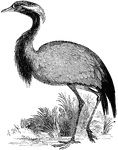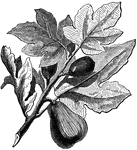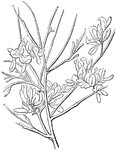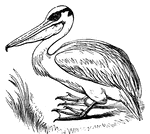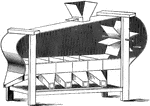
Winnowing Machine
A winnowing machine was traditionally used to separate yield from chaff. The pictured type of winnowing…
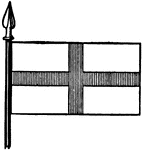
Flag of St. George
The Flag of St. George is a flag of Great Britain. It shows the red cross of St. George on a white field,…

White Ensign
The White Ensign is a flag of Great Britain. It is the peculiar flag of the royal navy.

New Zealand Flax (Flowers)
New Zealand Flax is a liliaceous plant bearing tough, radical leaves, usually about four feet in length.…

New Zealand Flax (Fruit)
New Zealand Flax is a liliaceous plant bearing tough, radical leaves, usually about four feet in length.…

Flowering Rush
A European plant which grows in stagnant or nearly stagnant water. It has long, sword-shaped leaves,…

Frankincense
Frankincense (Olibanum) is a gum resin obtained from Boswellia Carterii, of the order Burseraceae, and…

Gadwall Duck
The Gadwall (Chaulelasmus streperus) is a widely distributed duck, appearing throughout Europe and N.…
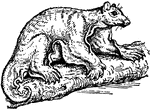
Galeopithecus
Galeopithecus is the generic name of certain mammals from the Malayan region, commonly (incorrectly)…
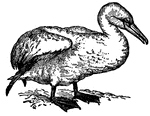
Gannet
Also known as a Solan Goose (Sula bassana), the Gannet is a large marine bird which nests in scattered…

Geum Urbanum
Geum urbanum is a member of the genus Geum, a genus of hardy plants (Rosaceae). Not usually used decoratively,…

Glaux Maritima
Also known as Sea Milkwort, Glaux Maritima is a hardy perennial seashore plant belonging to the order…

Golden-Crested Wren
Also known as the Kinglet, the Golden-Crested Wren (Regulus cristatus) is the smallest of European birds.…

British Golden-rod
British Golden-rod is a member of the large composite genus Solidago, which is chiefly North American.…

Gooseberry Caterpillar (Nematus ribesii) and Sawfly
Gooseberry Caterpillar is the name applied to the larvæ of two different insects, both injurious to…
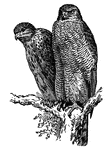
Goshawk
The Goshawk (Astur palumbarius) is a hawk abundant in the forest regions of northern Europe and Canada,…

Grass of Parnassus
A grass of Parnassus is any member of the genus Parnassia, of the Saxifrage family, growing in damp…

Grass Snake
Its color is olive-gray or brown above, with black bands and spots, and checkered black and white beneath.…
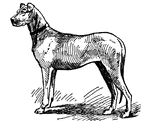
Great Dane
The Great Dane is a dog which has at different times been called the 'boar-hound', the 'German Mastiff',…
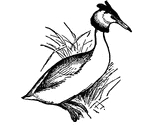
Great Crested Grebe
The Great Crested Grebe (Lophæthyia cristata) is a fresh-water, migratory, diving bird of the family…
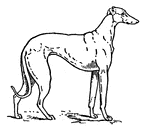
Greyhound
The Greyhound as a show dog is judged as follows: height and weight, ranging from 23 to 27 in. and from…

Ground Ivy
Ground Ivy (Glecoma hederacea) is a common European labiate hedgerow plant, with trailing stems, kidney-shaped,…
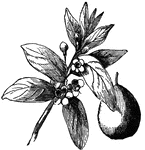
Guava
Guava (Psidium guayava) is a low-growing West Indian tree belonging to the family Myrtaceæ. It bears…

Guelder Rose
Also known as the Snowball Tree, the Guelder Rose is a cultivated form of the genus Viburnum, especially…

Common Guillemot
The Common Guillemot (Uria troile) is a member of the auk family. It breeds on all rocky coasts of the…
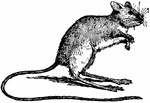
Jumping Mouse
The Jumping Mouse (Zapus hudsonius) is a N. American, jerboa-like mouse, with long hind legs, a very…

Kittiwake Gull
The Kittiwake gull (Rissa tridactyla) is a sea-gull characterized by the absence of the hind toe. It…

Head of Kudu
This illustration shows the head of a kudu. A kudu is a large African antelope related to the eland,…

Lamium Album
Lamium album (also known as the white dead-nettle, or archangel) is a member of the Lamium, a genus…

Langur
A langur is a monkey of the genus Semnopithicus, which contains Asiatic forms characterized by slender…

Lapwing (or Peewit)
A handsome plover-like bird of Northern Europe and Asia (Vanellus cristatus), also known in Great Britain…
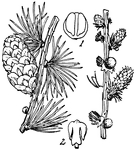
Larch, Cone and Flowers (male and female)
Larch, or Larix, is a genus of hardy, deciduous, coniferous trees of very graceful habit. They bear…
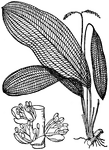
Lattice Leaf
Lattice Leaf is the popular name of a water plant, 'Aponogeton jenestralis', belonging to the order…

Kingfisher, Dacelo gigas
The Settler's Clock ('Dacelo gigs'), is a very large kingfisher found in Australia, where it receives…

Types of Simple Leaves
This illustration shows 4 types of simple leaves: 1. Linear (an elongated version of the elliptical);…
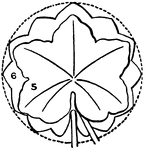
Types of Simple Leaves Derived from the Circular Type
This illustration shows two types of leaves derived from the circular type: 5. Palmately lobed; 6. Orbicular…
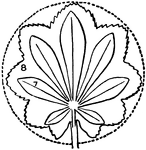
Compound Leaves Derived from the Circular Type
This illustration shows two types of compound leaves derived from the circular type: 7. palmately compound;…

Simple Leaves Derived from the Elliptical Type
This illustration shows two types of simple leaves derived from the elliptical type: 9. pinnately lobed;…

Compound Leaves Derived from the Elliptical Type
This illustration shows two compound leaves derived from the elliptical type: 11, 12. bipinnate.

Leaves Derived from the Oval Type
This illustration shows leaves derived from the oval type: 13. Ovate and Serrate; 14. Palmately three…

Colored Leaves of 'Cornus florida'
This illustration shows the colored leaves of 'Cornus florida', surrounding the small flowers and rendering…
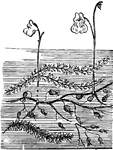
Bladderwort
This illustration shows a Bladderwort, some of whose leaves have converted into traps for insects.

Water Crowfoot
This illustration shows a water crowfoot, with broad, floating leaves, and much-cut, submerged leaves.

Lemming
A lemming is a small, yellowish-brown rodent, closely related to the vole, and belonging to the genus…

Lemon Tree-twig, with Leaves and Flowers
This illustration shows the twig, with leaves and flowers, of a Lemon tree (1. Pistil and part of the…

Ring-tailed Lemur
A familiar example of the true lemur, the Ring-Tailed Lemur (Lemur catta) , or 'Madagascar cat', is…

Portion of Lepidodendron
This illustration shows a portion of Lepidodendron. Lepidodendron is the generic name of a large and…
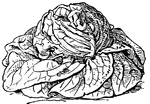
Cabbage Lettuce
Cabbage Lettuce is distinguished by its broad leaves and low spreading habit. It is an annual plant,…
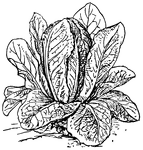
Cos Lettuce
Cos Lettuce, or Romaine Lettuce, is distinguished by its upright habit, and the oblong form of its leaves.

Hedge Garlic
Hedge Garlic (Sisymbrium Allaria). A, Inflorescence and Cauline Leaves. B, Radical Leaf and Root.
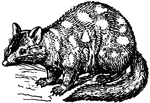
Dasyurus viverrinus
Dasyurus viverrinus, a small class of marsupial with a gray or brown coat spotted with white.
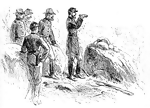
Little Round Top
A war council at the top of Little Round Top in Gettysburg, Pennsylvania. It was the site where the…
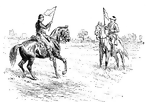
Flag of Truce
Civil War soldiers waving the flag of truce, signaling a halt in fighting for both sides.

